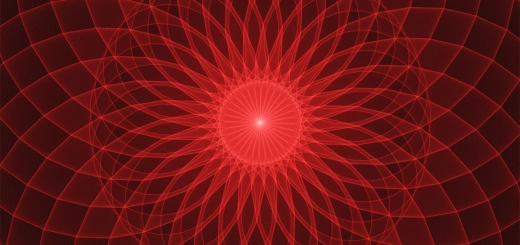Afterlife in Mithraism: Light, Darkness, and Judgment

Looking for more amazing products? Check out our online store and explore our collection here! Happy shopping!
Before diving in, please note: This post is for informational purposes only. If you’d like to know more about how we approach topics, feel free to check out our friendly Disclaimer Page.
Hey there, amazing readers! 
We’re committed to delivering quality posts, and your support (even just sticking around despite the ads) means everything to us. So, bear with us, and thanks for helping us keep the good vibes rolling. Now, on to the fun stuff!
TRANSLATE BUTTON AT THE END OF THE ARTICLE
Afterlife Beliefs in Mithraism
Mithraism, an ancient mystery religion practiced in the Roman Empire, held unique beliefs about the afterlife.
Followers of Mithraism believed in the immortality of the soul and the existence of an afterlife where individuals would be judged based on their actions in life.
The concept of the afterlife in Mithraism revolved around the idea of a journey that the soul undertakes after death, guided by the god Mithras.
The afterlife in Mithraism was seen as a continuation of the soul’s existence, where individuals would be rewarded or punished based on their deeds during their earthly life.
This belief in the afterlife served as a motivation for followers to lead virtuous lives and adhere to the teachings of Mithraism, in the hope of attaining a positive outcome in the afterlife.
Dualistic Nature of Afterlife
One of the central themes in Mithraic beliefs regarding the afterlife was the concept of dualism, where the universe was seen as a battleground between forces of light and darkness.
This dualistic nature extended to the afterlife, with followers believing that the soul would face a judgment that determined its fate based on its alignment with either light or darkness.
In Mithraism, the afterlife was not simply a state of existence but a continuation of the cosmic struggle between good and evil.
The dualistic nature of the afterlife emphasized the importance of leading a moral life and making choices that aligned with the forces of light, as this would ultimately determine the soul’s destiny in the afterlife.
Concepts of Light and Darkness
Central to Mithraic beliefs about the afterlife were the concepts of light and darkness.
Light was associated with purity, truth, and enlightenment, while darkness was linked to ignorance, falsehood, and spiritual decay.
Followers of Mithraism believed that the soul’s journey in the afterlife would be illuminated by the light of truth, guiding it towards a positive outcome.
The contrast between light and darkness in Mithraic beliefs symbolized the dichotomy between good and evil, highlighting the importance of making virtuous choices during one’s life to ensure a favorable afterlife.
The concepts of light and darkness were not only symbolic but were believed to have a tangible impact on the soul’s journey beyond death.
Role of Mithraic God in Afterlife
In Mithraism, the god Mithras played a central role in the afterlife, serving as a guide for the soul on its journey through the realms of light and darkness.
Followers believed that Mithras would judge the soul based on its actions in life, determining its ultimate destiny in the afterlife.
Mithras was seen as a benevolent deity who offered salvation to those who followed the path of righteousness and upheld the values of Mithraism.
The role of Mithras in the afterlife was to ensure that justice was served and that each soul received its rightful judgment based on its deeds in life.
Path to Salvation and Judgment
The path to salvation in Mithraism was based on the belief that individuals could achieve redemption through leading a virtuous life and aligning themselves with the teachings of Mithras.
Followers believed that by performing rituals, adhering to moral principles, and seeking enlightenment, they could secure a positive outcome in the afterlife.
Judgment in Mithraism was not only a reckoning of one’s actions but a reflection of one’s spiritual journey and growth.
The soul’s judgment was believed to be a transformative experience, where individuals would face their deeds and intentions with clarity and honesty, ultimately determining their fate in the afterlife.
Importance of Rituals in Afterlife
Rituals played a crucial role in Mithraic beliefs about the afterlife, serving as a way for followers to connect with the divine, seek forgiveness for their sins, and prepare for their journey beyond death.
Rituals in Mithraism were designed to enhance the soul’s spiritual journey and ensure a favorable outcome in the afterlife.
Followers of Mithraism believed that by performing rituals with sincerity and devotion, they could cleanse their souls of impurities, receive blessings from Mithras, and attain a higher state of consciousness that would guide them in the afterlife.
The importance of rituals in Mithraism underscored the belief that spiritual growth and enlightenment were essential for a successful transition to the afterlife.
Symbols of Light and Darkness
Symbols of light and darkness were prevalent in Mithraic art and rituals, representing the eternal struggle between good and evil in the afterlife.
The torchbearers in Mithraic iconography symbolized the light of truth that illuminated the soul’s path, guiding it towards salvation and enlightenment.
The symbols of light and darkness in Mithraism were not only visual representations but were believed to hold spiritual significance, influencing the soul’s journey in the afterlife.
The use of symbolic imagery in Mithraic practices reinforced the dualistic nature of the afterlife and emphasized the importance of making conscious choices that aligned with the forces of light.
Journey of the Soul
The journey of the soul in Mithraism was seen as a transformative experience that culminated in the soul’s judgment and ultimate destiny in the afterlife.
Followers believed that the soul would pass through various realms of existence, facing trials and challenges that tested its moral character and spiritual integrity.
The journey of the soul was guided by Mithras, who served as a beacon of light in the darkness, leading the soul towards salvation and enlightenment.
The soul’s journey in Mithraism was not only a physical passage but a metaphysical exploration of the self, uncovering hidden truths and revealing the soul’s true nature beyond earthly constraints.
Afterlife in Mithraic Art
Mithraic art often depicted scenes of the afterlife, showcasing the soul’s journey through the realms of light and darkness under the watchful eye of Mithras.
Artistic representations of the afterlife in Mithraism served as a visual reminder of the soul’s ultimate fate and the importance of leading a virtuous life in preparation for the afterlife.
The imagery in Mithraic art often featured symbols of light, such as torches and radiant figures, juxtaposed with symbols of darkness, such as serpents and demons.
These artistic representations reinforced the dualistic nature of the afterlife in Mithraism, emphasizing the eternal struggle between forces of good and evil that determined the soul’s destiny beyond death.
Influence on Roman Funerary Practices
Mithraism had a significant influence on Roman funerary practices, shaping the way in which individuals prepared for death and commemorated the departed.
Followers of Mithraism believed that rituals and offerings could aid the soul in its journey to the afterlife, leading to the incorporation of Mithraic symbols and practices into funerary ceremonies.
Roman tombs often featured Mithraic imagery and inscriptions, highlighting the deceased’s affiliation with the cult and their belief in the afterlife guided by Mithras.
The influence of Mithraism on Roman funerary practices underscored the significance of the afterlife in ancient Roman society and the role of religion in providing comfort and guidance to the living and the dead.
Varied Interpretations of Afterlife
While Mithraism presented a specific set of beliefs about the afterlife, there were varied interpretations of these teachings among followers and scholars.
Some believed that the afterlife in Mithraism was a literal journey of the soul through different realms, guided by Mithras, while others viewed it as a symbolic representation of the soul’s moral evolution and growth.
The varied interpretations of the afterlife in Mithraism reflected the complex nature of ancient religious beliefs and the diversity of spiritual experiences among individuals.
Regardless of the interpretation, the afterlife remained a central tenet of Mithraic beliefs, serving as a source of hope, guidance, and motivation for followers seeking enlightenment and salvation.
Continuation of the Soul in Mithraism
Mithraism taught that the soul was immortal and would continue to exist beyond death, embarking on a journey through the afterlife that would ultimately determine its fate.
Followers believed that the soul’s journey was not a solitary one but was connected to the cosmic forces of light and darkness, reflecting the eternal struggle between good and evil.
The continuation of the soul in Mithraism emphasized the importance of leading a virtuous life and seeking enlightenment in preparation for the afterlife.
Followers believed that by aligning themselves with the teachings of Mithras and embracing the dualistic nature of the universe, they could secure a positive outcome in the afterlife and attain spiritual liberation.
Conclusion
In conclusion, the afterlife in Mithraism was characterized by beliefs in light, darkness, judgment, and salvation.
The dualistic nature of the afterlife, guided by the god Mithras, emphasized the eternal struggle between good and evil and the importance of leading a virtuous life to secure a positive outcome beyond death.
Rituals, symbols, and artistic representations played a crucial role in preparing followers for their journey through the realms of the afterlife, influencing Roman funerary practices and shaping beliefs about the soul’s continuation.
Varied interpretations of the afterlife in Mithraism reflected the complexity of ancient religious beliefs and the diverse spiritual experiences of individuals seeking enlightenment and salvation.
Ultimately, the afterlife in Mithraism served as a source of hope, guidance, and motivation for followers on their spiritual journey towards immortality.

The Enlightenment Journey is a remarkable collection of writings authored by a distinguished group of experts in the fields of spirituality, new age, and esoteric knowledge.
This anthology features a diverse assembly of well-experienced authors who bring their profound insights and credible perspectives to the forefront.
Each contributor possesses a wealth of knowledge and wisdom, making them authorities in their respective domains.
Together, they offer readers a transformative journey into the realms of spiritual growth, self-discovery, and esoteric enlightenment.
The Enlightenment Journey is a testament to the collective expertise of these luminaries, providing readers with a rich tapestry of ideas and information to illuminate their spiritual path.
Our Diverse Expertise
While our primary focus is on spirituality and esotericism, we are equally passionate about exploring a wide range of other topics and niches 

To ensure we provide the most accurate and valuable insights, we collaborate with trusted experts in their respective domains 
Our blog originally focused on spirituality and metaphysics, but we’ve since expanded to cover a wide range of niches. Don’t worry—we continue to publish a lot of articles on spirituality! Frequently visit our blog to explore our diverse content and stay tuned for more insightful reads.
Hey there, amazing reader! 
Check out our store here and take a peek at some of our featured products below! Thanks for being awesome!










